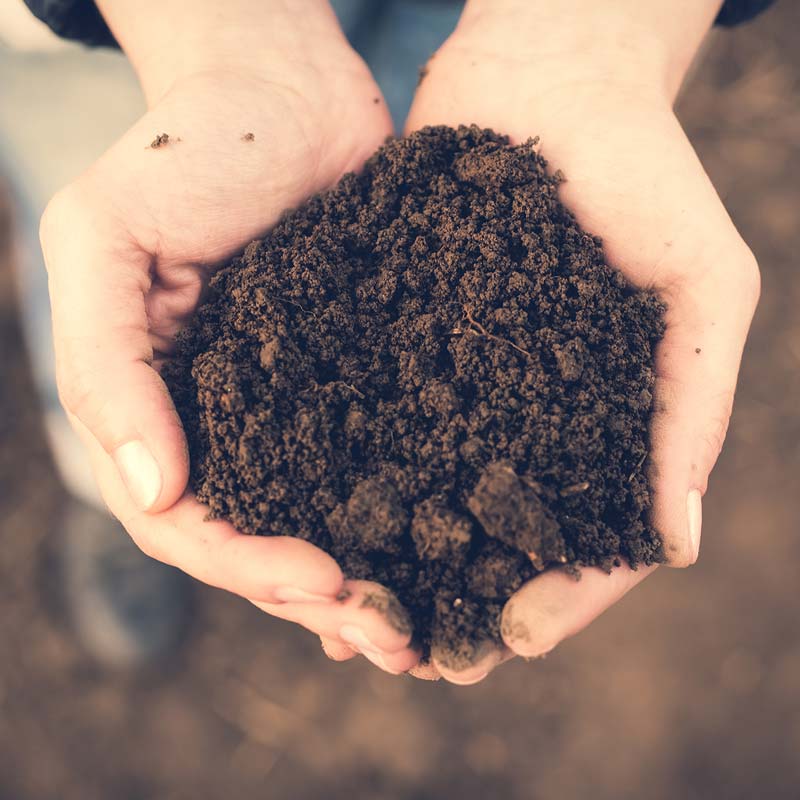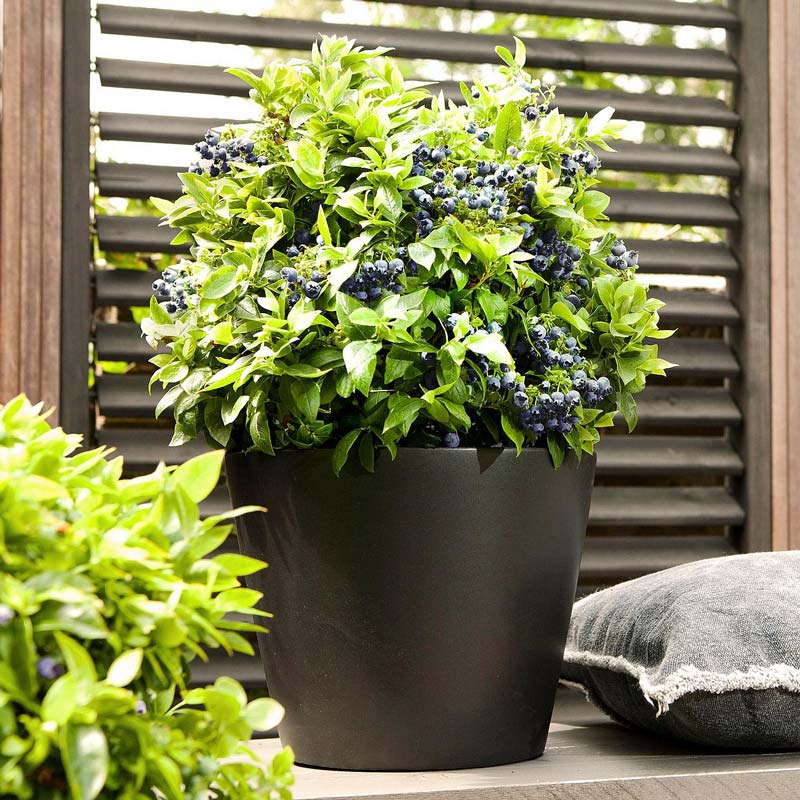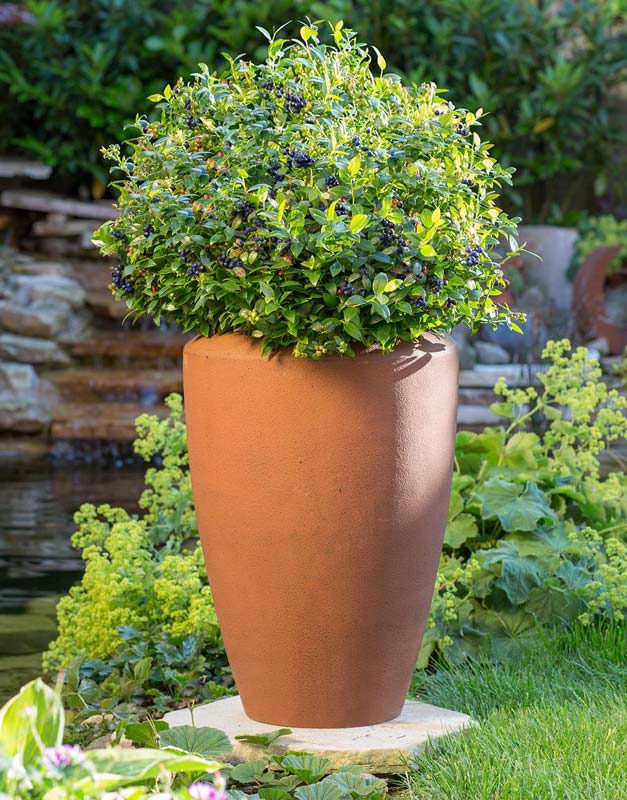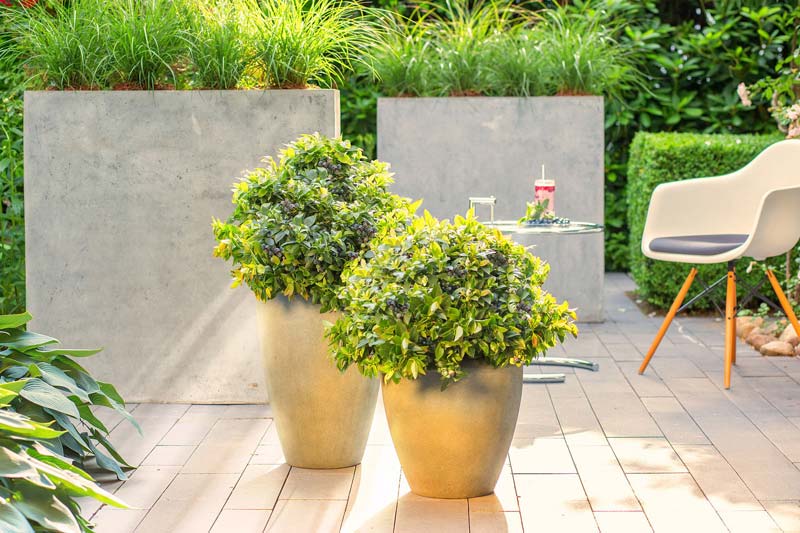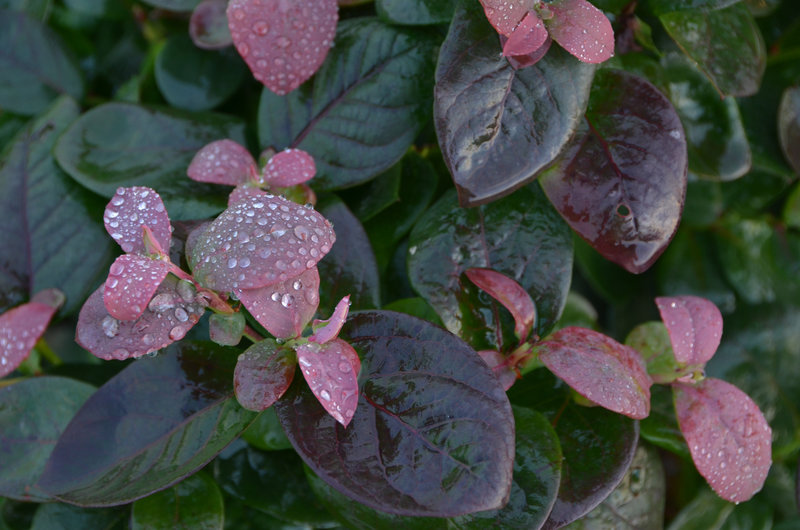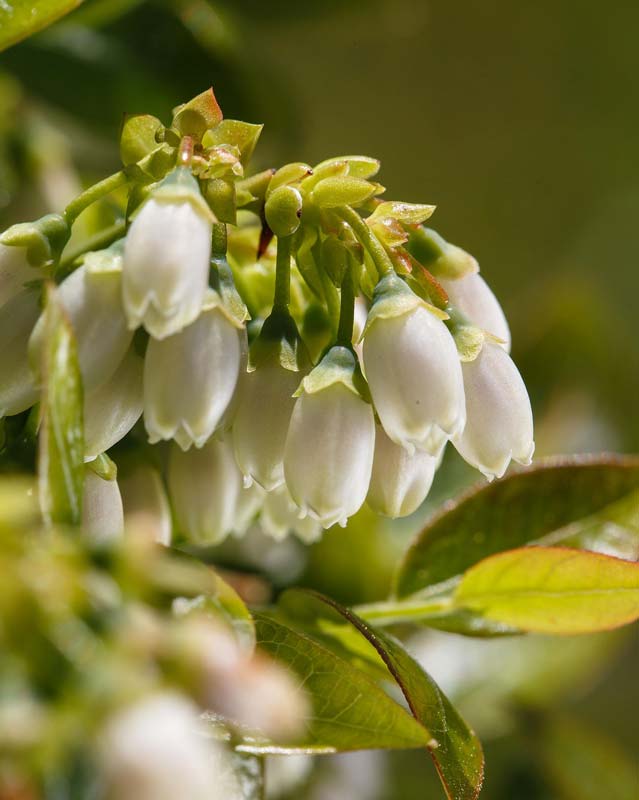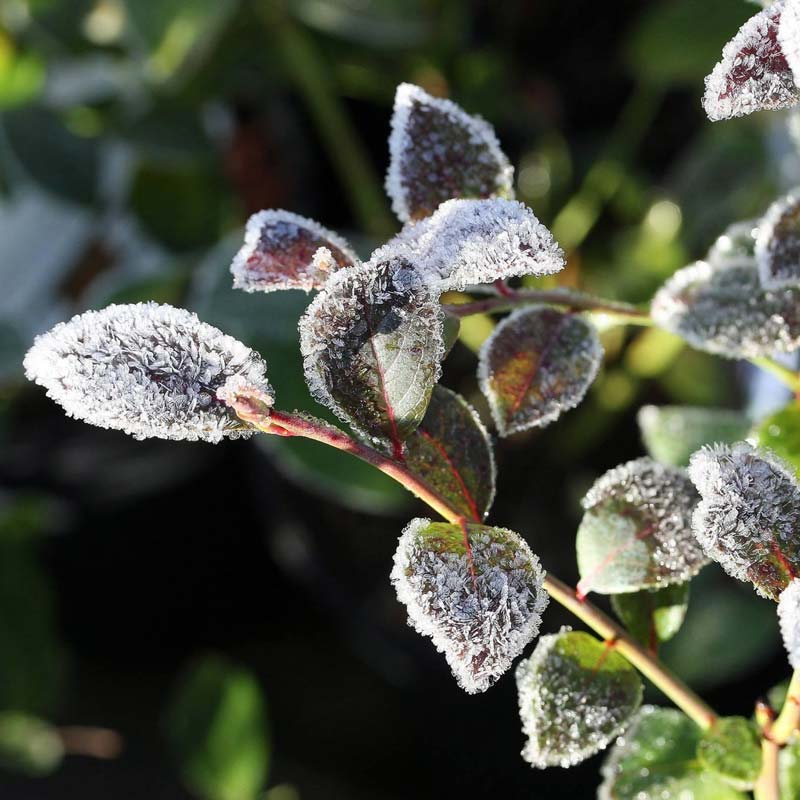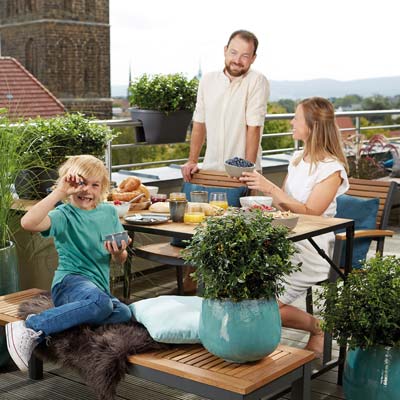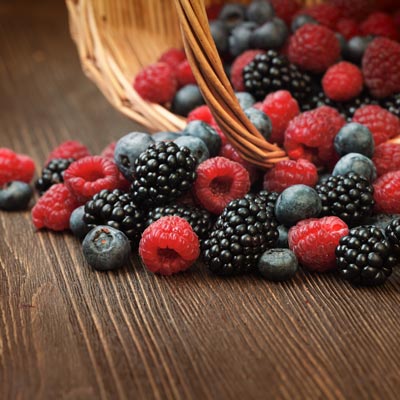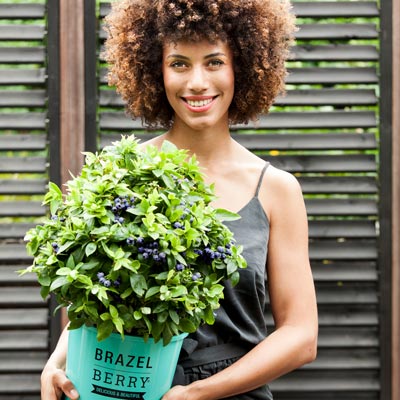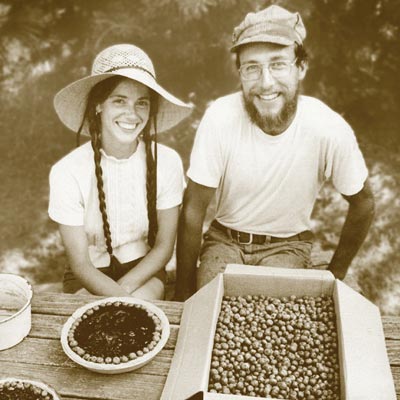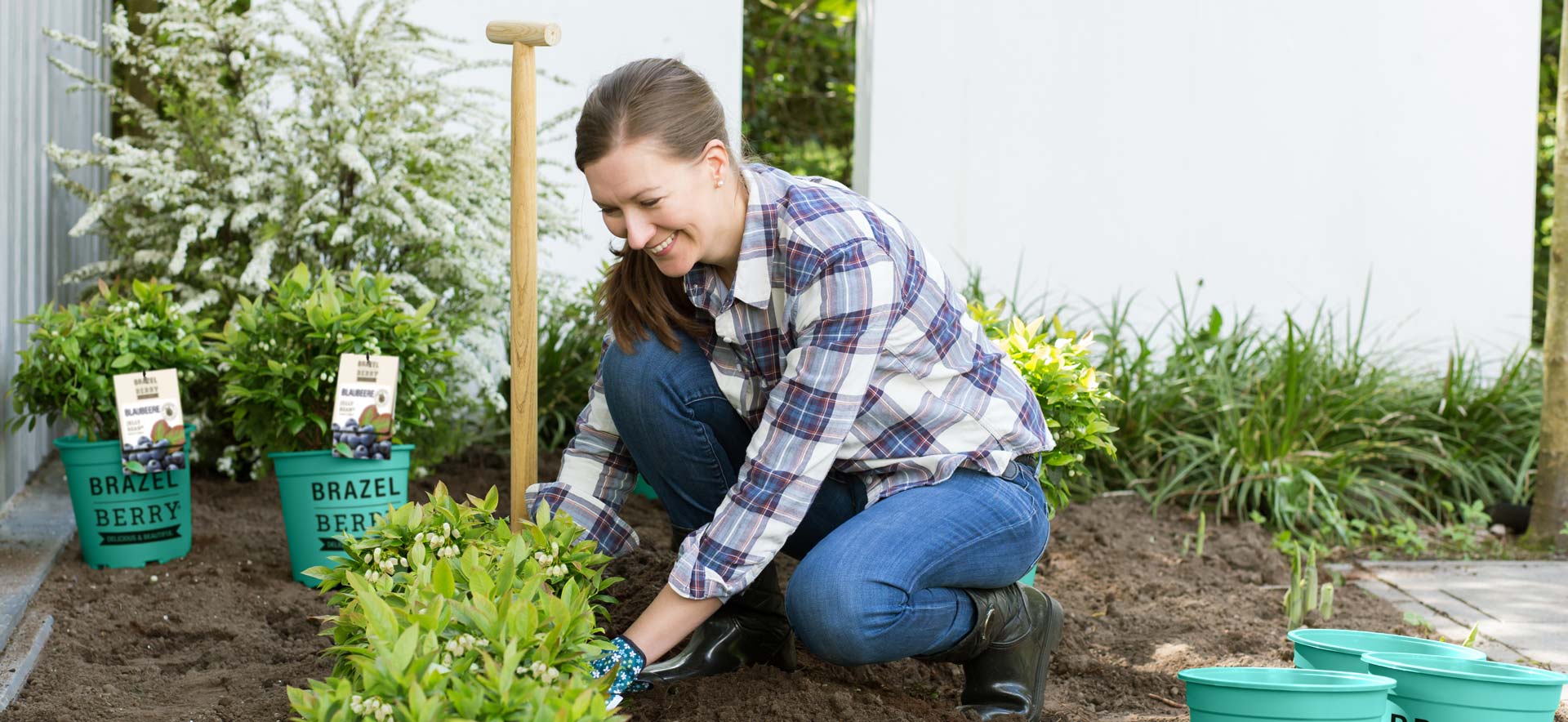
Planting
BrazelBerry® blueberries prefer a permeable, acidic soil. The ideal pH value (degree of acidity) is between 4.5 and 5.5. Baby Cakes® blackberries prefer a pH value of between 6.5 and 7.5. This ensures optimal uptake of nutrients.
BrazelBerry® plants thrive in beds as well as pots.
The quick and easy way to find out the acidity of your soil is to use a pH soil test. That shows you the pH value of the soil within minutes. Test sets are available from any garden centre.
If the pH value is too high, mix in soil for moorland plants.
BrazelBerry® in pots
If you plant BrazelBerry® plants in pots, make sure they are not too small and allow plenty of room for the plants to grow. We recommend a minimum diameter of 40 cm. If you plant additional plants in the pot, choose a correspondingly larger diameter.
Tip: pot plants dry out faster than plants in a bed. That's why you should water them every day in hot summer weather. Ideally, add water until it starts to run out of the drainage holes in the pot. To prevent a build-up of water, we recommend ensuring good drainage in the form of gravel, shards of clay or expanded clay in the bottom of the pot.
Pruning
BrazelBerry® blueberries naturally grow in a compact, often spherical form, so you don't necessarily have to prune them. However, if you want to or have to for reasons of space, you can cut them back without any problems. The best time for this is between November and early March, when the BrazelBerry® plants are still dormant.
Tip: pruning thick, dead branches boosts fruit production because the plant then directs its growth energy into producing young shoots with more fruits.
It's best not to prune Baby Cakes® blackberries in the winter. Completely new shoots as well as new growth on old branches produce blossoms and then blackberries next spring. You can cut any branches that do not produce new growth in spring right back.
Location
BrazelBerry® plants thrive in a sunny location protected from wind.
All BrazelBerry® plants are self-fertile, i.e. they don't need a second variety for pollination in order to produce fruit. We guarantee this valuable property for all BrazelBerry® blueberry plants. However, if you plant them next to another BrazelBerry® variety, you can increase the yield even further.
Watering
The volume of water required depends on the time of year and the weather. However, a rule of thumb is that the soil must always be sufficiently moist. On the other hand, you must not over-water BrazelBerry® plants. This is very important. A rough rule in summer is: water plants in beds two to three times per week, and pot plants every two days. Daily watering is necessary at the height of summer.
Tip: ideally, water with soft rainwater.
Fertilizing
To guarantee bumper crops, it is important to add fertilizer to BrazelBerry® blueberries from time to time. We recommend doing this both in early spring at the beginning of the growth period and in early summer when the berries are ripe. You can use any fertiliser for acid-loving plants such as azaleas or rhododendrons. Granulate or liquid fertilisers are equally suitable.
Also excellent are organic nitrogen fertilisers such as horn shavings. They provide balanced nutrients and promote humus formation in the soil. We don't recommend using manure or compost because they usually have a high lime content that would damage acid-loving blueberries.
Tip: coffee grounds make an unconventional but effective blueberry fertiliser. Simply occasionally sprinkle them onto the soil. Coffee grounds acidify the soil and contain phosphor, potassium and nitrogen which give the blueberries a free boost.
Baby Cakes® blackberries don't necessarily need fertiliser to produce fruits, but adding fertiliser in early spring can help them thrive and increase the delicious crop. A balanced fertiliser with an equal ratio of nitrogen, phosphor and potassium is ideal.
Winter storage
All BrazelBerry® blueberries and blackberries are resistant to cold. However, just like other pot plants, the root ball needs protecting so it doesn't dry out in frosty conditions. So, at extreme temperatures it's a good idea to provide extra protection both for pot plants and exposed plants in beds. During long cold periods, you can generously cover the soil with bark mulch and add extra water. This helps prevent evaporation and drying out. If it gets extremely cold, you can move your pot plants into an unheated garage.
Also in spring, when your BrazelBerry® plants come out of their dormant state and start to produce new buds and shoots, you should protect them from late frosts. The easiest way to protect them from night frosts is to cover your plants e.g. with frost-protection matting. However, you must remove the covering during the frost-free daytime.
